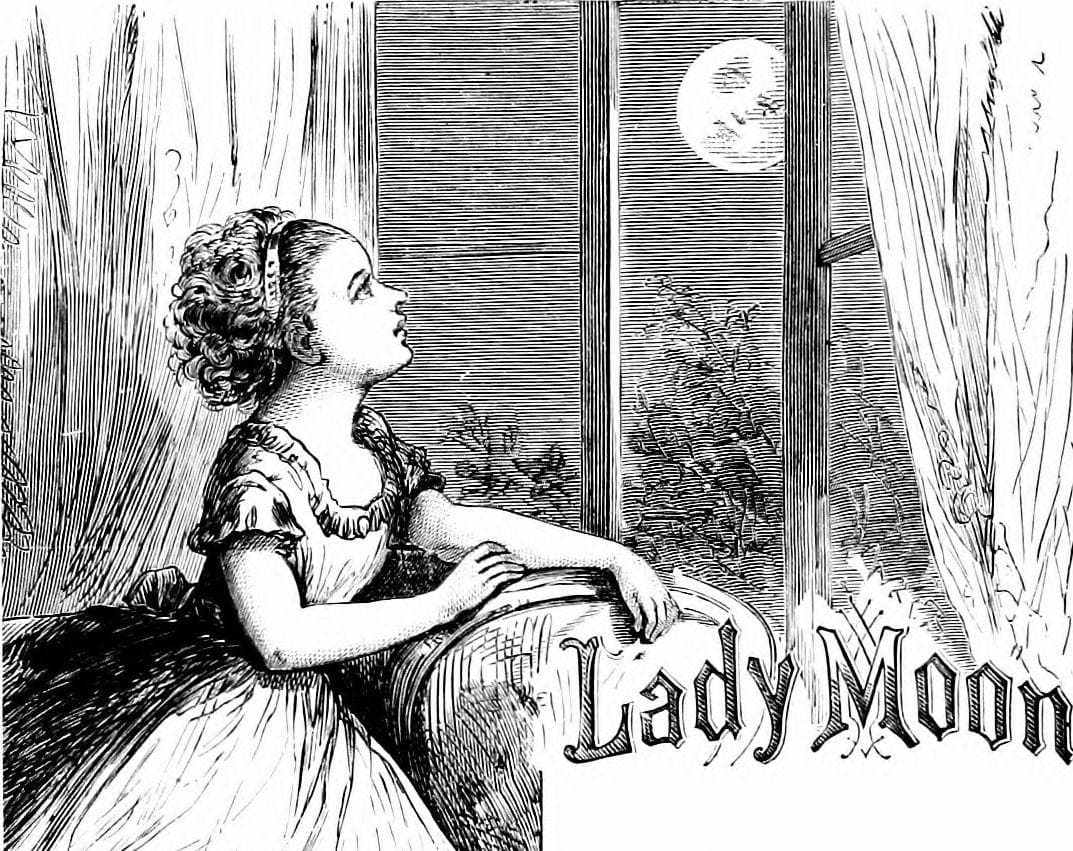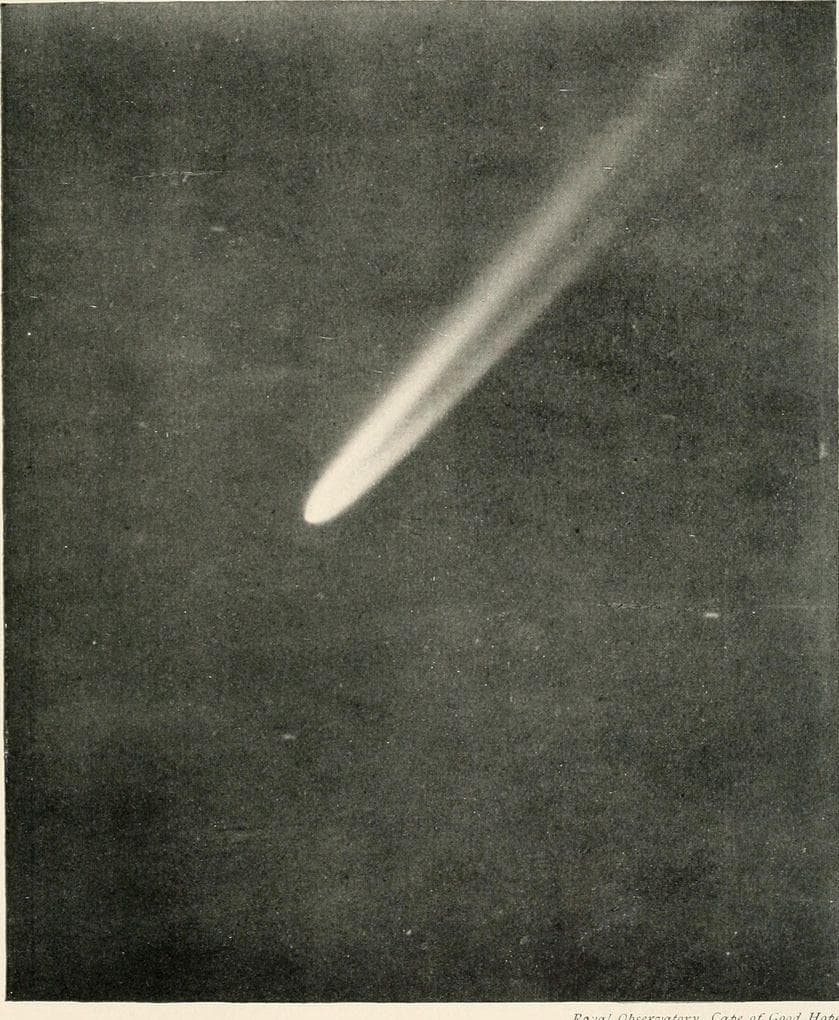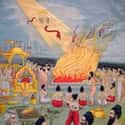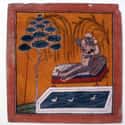-
(#1) Romantic Kissing Is Not Universal To All Cultures
Romantic kissing is not practiced everywhere in the world. In fact, in a study of 168 cultures, romantic kissing only appeared to be common in 46% of them - slightly less than half. The study revealed that romantic kissing is most common in Asia and the Middle East, but least common in Central America.
Why some cultures kiss romantically and others don't may actually have to do with the type of society they inhabit. According to a 2015 Yale overview on human relations: "Complex societies with distinct social classes (e.g. industrialized societies) have a much more frequent occurrence of this type of kissing than egalitarian societies (e.g. foragers)."
-
(#2) In Some Cultures, Kissing Is Seen As A Sign Of Respect, Not Romance
For some cultures, the primary function of kissing can is to show social status and deference. In places where romantic kissing is uncommon, like among certain cultural groups in Central America, kissing is seen as a sign of respect. In the Ethiopian highland community of Amhara, some relatives kiss on the cheeks after being away for a while, and some kiss in order of status (those higher up in society are kissed first). Servants and children kiss the feet of their higher-ups and elders.
In these cultures, kissing is first and foremost a show of respect and will most likely not be practiced romantically.
-
(#3) Romantic Kissing Might Have Evolved From The Way Mother Birds Feed Their Babies
Be prepared to be slightly grossed out - kissing may be a learned behavior from "kiss-feeding," the way mother birds feed their young by first chewing the food and then spitting it out into the mouths of their offspring. Some cultures even still practice kiss-feeding, but not romantic or cultural kissing. According to Psychology Today:
Kissing could also be a culturally determined form of grooming behavior, or, at least in the case of deep or erotic kissing, a representation, substitute for, and complement to, penetrative intercourse.
-
(#4) There's Discussion Of Kissing In Several Ancient Sanskrit Texts – And There's A Whole Chapter On It In The 'Kama Sutra'
Ancient Vedic texts from India, some dating from 1,500 BCE, describe what amounts to an early form of kissing, and the epic poem Mahabharata from 400 BCE also references smooching. However, it's the Kama Sutra, an erotic Indian text that dates back to anywhere between the 2nd and 5th centuries, that really goes into detail on kissing. The ancient Sanskrit manual for intimate pleasure has an entire chapter dedicated to the practice of kissing.
It is postulated that romantic kissing was brought to the Greeks by Alexander the Great after he invaded India back in 326 BCE and must have witnessed or heard of the practice. With a manual on hand, it isn't surprising that people began exploring kissing and its pleasurable benefits.
-
(#5) Kissing Is Described In Numerous Ancient Texts In Various Cultures
The Kama Sutra is not the only text to depict kissing. Homer, the famous Greek poet, described King Priam kissing the warrior Achilles's hand to beg for his son's body back. Another Greek writer, Herodotus, talks about Persians kissing each other in order of rank. It is in the Old Testament, too, when Jacob kisses his father and steals his brother's birthright.
In India, one poem from around 1000 BCE described romantic kissing as such: "She set her mouth to my mouth and made a noise and that produced pleasure in me."
-
(#6) The Romans May Have Made Kissing More Widespread
The Greeks may have learned about kissing from the Indians, but the Romans really took it to the next level. The Romans kissed everyone: partners, children, parents, superiors. They had very specific rules and designations for these different types of kisses, as well. According to Psychology Today: "They distinguished a kiss on the hand or cheek (osculum) from a kiss on the lips (basium) and a deep or passionate kiss (savolium)."
With these terms in place, the Romans could transcend kissing boundaries and practice all sorts of kissing, from the strictly platonic to the sensually passionate.
-
(#7) The Fall Of The Roman Empire Signaled The End Of Kissing For 1,000 Years
The ancient Romans did a good job of setting up what we see as modern kissing for romantic purposes, but with the fall of their empire came a kissing drought for nearly 1,000 years. After it returned, kissing was immensely popular - until the mid-1600s. After that, kissing was replaced with more courtly gestures such as bowing and curtsying.
This change probably had a lot to do with the Black Plague, though, and less to do with the Church, which began discouraging kissing in the 1300s for fear of it developing into more "carnal acts." This makes some sense considering that a particularly involved smooch can involve the exchange of up to 80 million bacteria between the involved partners.
-
(#8) Kissing Returned At The End Of The 11th Century, More Romantic Than Ever
Luckily, the kissing drought did not last long, and the well was replenished in the 11th century with the rise in popularity of courtly love. Specifically, romantic love that individuals found - not arranged courtships. The tale of Romeo and Juliet is emblematic of such a turn in thought.
The play "sought to remove courtship from the control of family and society and celebrate romantic love as a liberating, self-determining, and potentially subversive force," according to Psychology Today.
-
(#9) Hand-Kissing In The 17th Century Led To The Modern Handshake
Fun fact: the handshake, kissing's more restrained cousin, stems from kissing. According to Seeker: "Between 1760 and 1840, during the Industrial Revolution, the hand kiss became popular in England and eventually evolved into handshaking." The handshake was also popularized in the 1300s when the Pope banned what was called the "holy kiss," opting instead for the handshake, which is still prevalent as a replacement for the holy kiss in modern Catholic culture.
In addition, before widespread literacy, people used to seal their agreements in person with a kiss, hence "seal with a kiss," or "x on the dotted line."
-
(#10) A Few Of The Cultures That Don't Kiss View It As 'Disgusting'
There is a range of perceptions about kissing in cultures that do not partake in the practice, and those can fluctuate anywhere from mild curiosity to absolute disgust. A good example comes from the "Human Relations Area Files" at Yale University:
The Tsonga people of Southern Africa are also openly disgusted by the practice: 'Kissing was formerly entirely unknown… When they saw the custom adopted by the Europeans, they said laughingly: 'Look at these people! They suck each other! They eat each other's saliva and dirt!' Even a husband never kissed his wife.'
Another group that doesn't totally get the appeal of kissing is the Mehinaku tribe of Brazil, who called the practice "gross." In some cultures, the idea of kissing one's spouse on the mouth is seen as "a ludicrous infantilization," as these parents often kiss only their children.
-
(#11) Kissing Is Not Unique To Human Beings
Surprise! Human beings are not the only animals to kiss. Apes kiss each other; dogs and cats lick and cuddle each other as do other animals; even snails "engage in antennal play." Although these animals might only be grooming one another or using it as some form of communication, the indication is some sort of bonding experience.
Bonding is the reason humans engage in similar behavior, whether or not that is romantic kissing or otherwise.
New Random Displays Display All By Ranking
About This Tool
Many scientists have studied for many years whether kissing is an acquired or an instinct. The truth is that not everyone kisses. Anthropologists have published that people in many parts of the world have not actually been kissing for thousands of years. A new study found that the romantic kiss does not exist in half of the human cultures, and it is often absent among animals.
In certain social cultures, the kiss is of great significance. In many hunter-gatherer groups, you can't see a trace of kissing or kissing desire at all. Some ethnic groups even think the kiss is disgusting. The random tool lists 11 cultures in history where humans did not kiss each other.
Our data comes from Ranker, If you want to participate in the ranking of items displayed on this page, please click here.





















